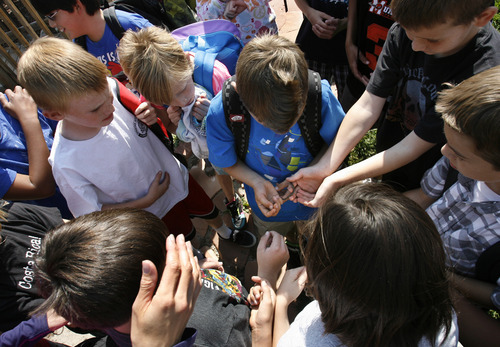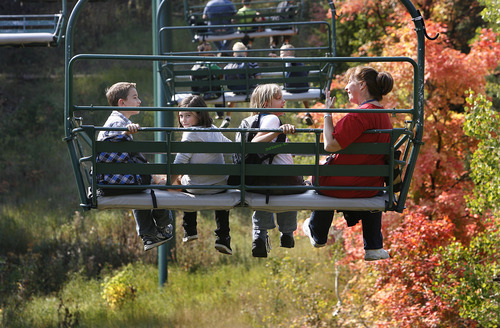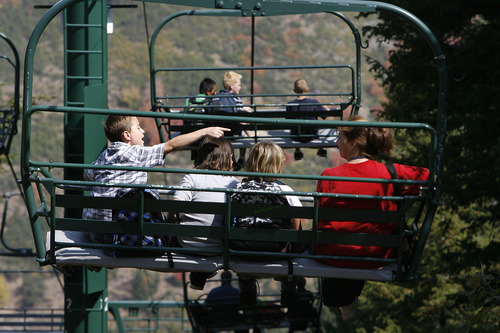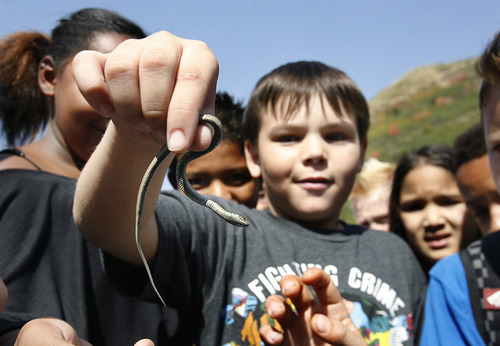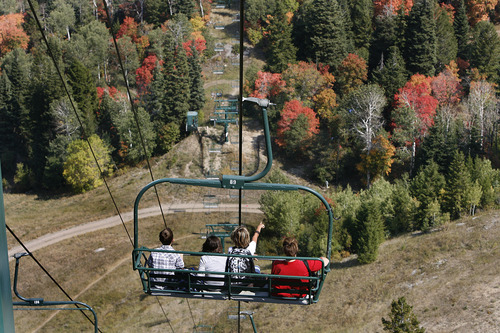This is an archived article that was published on sltrib.com in 2012, and information in the article may be outdated. It is provided only for personal research purposes and may not be reprinted.
Melinda Morriss realizes her fourth-grade students at Franklin Elementary School in Provo sometimes have a difficult time connecting with her "environments of Utah" lesson plan.
The majority of the young students in her class can only relate to the urban environment around their Provo city homes.
A program started by rangers at Timpanogos Cave National Monument this year is helping Morriss' students experience firsthand what their teacher is talking about.
"To have them there in the mountains is amazing. It is solidifying what I'm teaching in the classroom. They are becoming masters of their knowledge; it is not just a vague concept," Morriss said. "They see the trees and the different habitats and listen to animals they have not heard before. That will last with them a lot longer than reading a book or just hearing me lecture."
National Park Service officials at Timpanogos Cave have always welcomed students on field trips with educational fee waivers, but chief ranger Michael Gosse recognized a decline in recent years.
"I was hearing more and more from teachers that they would love to come on a field trip, but that money for buses was becoming harder to get," he said.
When Gosse heard about a National Park Foundation grant designed "to connect diverse, under-engaged populations with their national parks in innovative and meaningful ways" he pursued the opportunity.
That resulted in a $12,000 grant to Timpanogos Cave National Monument, which became one of 49 national parks this spring to receive grant money through the America's Best Idea program. The National Park Foundation, the national parks' official charity, created the program based on the success of the Ken Burns documentary "The National Parks: America's Best Idea."
"Timpanogos Cave National Monument is grateful for the opportunity to partner with the National Park Foundation to provide hands-on learning experiences to over 1,400 underserved students in the local area in cooperation with our Kids in Nature partners," Timpanogos Cave National Monument Superintendent Jim Ireland said in a prepared release. "We are excited to enhance the earth science curriculum the students receive in the classroom with real life experiences on a mountain top, in a wetland, in the forest and in our cave system."
Realizing that there was more to see in Utah County than Timpanogos, where students learn about cave ecology, Gosse sought partners for the Kids in Nature program. The U.S. Forest Service (forest and fire ecology in American Fork Canyon), Utah State Parks (wetland ecology at Utah Lake), Sundance Resort (mountain ecology), Thanksgiving Point (water and plant ecology) and the Hutchings Museum (rocks and minerals), all came aboard to offer field trips with an earth science focus to the students.
More than 400 elementary-age students participated in the program over the summer and another 1,000 are slated to make a field trip before snow limits access at Timpanogos Cave and American Fork Canyon. All are from Utah County and Salt Lake County Title I schools, those with a high percentage of children from low-income families.
For Morriss, seeing her students witness nature in the mountains for the first time is a special, and sometimes funny, experience.
During the visit with the Forest Service in American Fork Canyon she watched as students tried to describe their feelings at seeing fall colors up close in the mountains for the first time. There was also a moment of fear when students heard what they thought might be a rattlesnake.
"I explained to them that it was a squirrel chattering," she said.
Morriss hopes the Kids in Nature program continues allowing her to provide firsthand experiences for her students.
Gosse said he plans to apply for the America's Best Idea grant again for 2013, but the monument is trying to tuck away money from its budget to keep Kids in Nature functioning on at least a basic level, regardless.
"We certainly hope to continue it," he said. "We have had some great success this year and we hope to build on that."
For more information on the National Park Foundation or to make a donation, go to http://www.nationalparks.org/.


